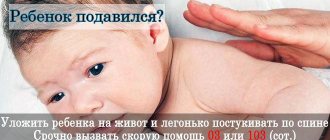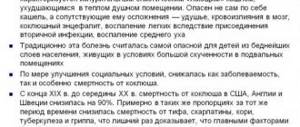Coughing is a protective reaction of the body. Thanks to this symptom, mucus is removed from the respiratory tract, and with it microorganisms, dust particles, and sometimes small foreign bodies. In most cases, it brings relief to a person, while a sudden spasmodic cough (also known as spastic cough) threatens a number of problems. The sick person is unable to engage in a favorite activity or outdoor activity. Finally, the deterioration of the condition, which entails a spasmodic cough, can be life-threatening. What are the causes of this cough, what diseases does it occur with, and what measures should be taken to overcome it? This is what we will talk about.
Causes of spasmodic cough
Dry spasmodic cough occurs during inflammatory processes in the bronchi and trachea caused by infectious agents, allergens, dust, toxic substances and other factors. It is caused by the aspiration of small foreign bodies into the trachea and bronchi, as well as neoplasms (tumors) of these respiratory tracts. This type of cough, like the cough reflex in general, is based on irritation of the superior laryngeal nerve. Since it is almost always very strong, there is a danger of loss of consciousness, vomiting during an attack, and even seizures.
Attacks of spasmodic cough are almost always accompanied by a deterioration in general condition, increased body temperature, pain in the chest area, aggravated by coughing, pain in the joints and muscles, and sleep disturbances.
Causes of spasmodic cough:
- infectious (viruses, bacteria);
- allergic (manifested by individual intolerance to foods, medications, plant pollen, bird fluff, animal hair, etc.);
- toxic (exposure to varnishes, paints, various gases);
- thermal (high and low temperatures);
- physical (entry of foreign bodies into the lumen of the bronchi and trachea, as well as compression of these organs from the outside. For example, a growing tumor or an enlarged thyroid gland with diffuse goiter);
- other neuro-reflex effects leading to irritation of the laryngeal nerve.
Attention! During an increase in the symptoms of spasmodic cough, it is important not to miss the moment and consult a doctor in time to accurately determine the causes of deterioration in well-being and promptly prescribe treatment.
Causes of dry paroxysmal cough in children
If a child has an attack of an uncontrollable dry cough, the pediatrician can state several reasons for its occurrence. Most often this is:
- bronchial asthma (inflammatory processes in the respiratory tract of a chronic type, accompanied by shortness of breath);
- allergic reaction (response of the body that shows hypersensitivity to certain irritants, which can cause inflammatory processes in the respiratory tract);
- viral infection (a group of diseases caused by infection with a virus).
What diseases is this type of cough typical for?
Almost all inflammatory diseases of the upper respiratory tract can cause spasm during coughing of the smooth muscle muscles of the bronchi and trachea. Cough in different pathologies has its own characteristics; it can torment the patient for a long time with its attacks or manifest itself symptomatically. Spasmodic cough is characteristic of the following diseases.
- ARVI begins with a painful dry cough, to which a spastic component is added. This occurs when the trachea and bronchi are involved in the process. Like all infectious diseases, it is accompanied by a rise in temperature to high numbers, pain and sore throat, and a deterioration in general condition.
- Tracheitis, laryngotracheitis, laryngotracheobronchitis. The listed pathologies can exist as independent diseases, or manifest themselves as separate symptoms as part of an infection. With each of them there is an inflammatory lesion of the trachea and bronchi. As a result, they will manifest themselves in the form of spasmodic coughing attacks.
- Acute bronchitis, or inflammation of the bronchi, occurring with attacks of dry cough, worsening at night. It is characterized by rapid development with swelling of the mucous membrane and subsequently increased or moderate secretion of mucus.
- Chronic obstructive bronchitis is accompanied by a cough. As with previous diseases, it is characteristic of this disease and manifests itself in the form of coughing spasmodic attacks in adults.
- Whooping cough: a childhood infection caused by the whooping cough bacillus. The main symptom of the disease is a paroxysmal spasmodic cough, which occurs in the form of a series of short cough bursts, performed “in one breath.” The attack may end with vomiting, loss of consciousness, and rarely, convulsions. Dangerous due to the development of asphyxia and respiratory arrest.
- Bronchial asthma: occurs in the form of attacks of suffocation with difficulty in breathing, especially at night, and a spasmodic cough.
- Spasmodic cough of a neuro-reflex nature. The causes in such cases are nervous strains and muscle strain. May be provoked by bronchial asthma.
- The entry of a foreign body into the lumen of the bronchi and trachea causes a spasmodic cough.
- Compression “outside” the bronchial and tracheal tubes by a growing tumor or an enlarged thyroid gland close to them (anatomically) in thyrotoxicosis (diffuse toxic goiter).
Diseases accompanied by attacks of dry cough
A paroxysmal dry cough in an adult can occur due to a foreign body entering the body.
Signs of attacks disappear after removing foreign particles from the human body. Things are more serious if a dry cough with attacks is the cause of inflammatory diseases in the respiratory system. Diseases that accompany dry cough with attacks:
- Bronchial asthma. The reason is a spasmodic cough with attacks. The patient complains of attacks of cough syndrome; when listening to the doctor in the office, you can hear slight wheezing in the bronchi. A characteristic sign of the disease is the production of clear sputum.
- Acute bronchitis. The disease occurs due to past viral infections. The cough is accompanied by pain and itching in the throat. During attacks, a person experiences a migraine and may lose consciousness. Sputum production increases, a person feels tired, chills, muscle pain, and body temperature rises. When listening to the lungs, the doctor feels difficulty breathing and wheezing. The patient begins to experience shortness of breath and does not produce sputum when coughing.
- Influenza pneumonia. During coughing attacks, purulent-mucous blood discharges. The patient often feels nauseous, the body temperature rises, the general condition worsens, and severe pain is felt in the chest area. Muscle weakness, shortness of breath appear, and the skin may turn blue. In severe forms of the disease, the composition of the blood changes, acute vascular insufficiency appears, the lungs swell and the person has difficulty breathing.
- Tumor in the bronchi. If neoplasms are detected in the lungs, a paroxysmal cough appears quite early. The sputum is separated along with the blood. If an adult develops a prolonged, persistent cough, which is accompanied by fever, pain, and swelling of the face, then lung cancer may develop.
A dry paroxysmal cough in a child may appear due to dust, or may be the beginning of an inflammatory process. Children are mainly tormented by a night cough, when attacks are more severe. The reasons for exacerbation of attacks are as follows.
- Night cough syndrome is the result of gastric juice reflux into the esophagus. The cough is mostly dry, with characteristic attacks, accompanied by vomiting. In adults, a nonproductive cough occurs during exacerbation of chronic diseases.
- Exacerbation of asthma is always expressed by pain in the sternum, the person experiences difficulty in inhaling and exhaling.
Paroxysmal cough syndrome may also occur. Characterized by outbreaks of bronchospasm, which does not go away for a long time. In this case, the patient cannot expectorate mucus; the cough greatly irritates the mucous membranes of the bronchi and throat.
A dry paroxysmal cough in an adult develops without fever if it is caused by bronchospasms or an allergen. To identify the cause, first consult an otolaryngologist.
If an adult or child has a severe cough, which is accompanied by attacks and other symptoms, it is important to consult a doctor promptly and, after making a diagnosis, begin appropriate treatment.
Helping a child with a spasmodic cough
There are times when a child suddenly develops a spasmodic cough at night. To help your child cope with the problem that has arisen, you should first of all know its cause. To do this, you simply need urgent consultation with a specialist. However, all this takes time, and action must be taken immediately. If a child has a spasmodic cough and the baby’s condition worsens, with shortness of breath and cyanosis increasing, immediately call an ambulance.
In cases where there are symptoms of ARVI or another infectious disease, accompanied by fever, runny nose, hyperemia of the tonsils and pharynx, you can get by with calling a pediatrician at home. And at this time it is necessary to create comfortable conditions for the baby that will help alleviate his condition, for example:
- Maintain the optimal air temperature in the room, not exceeding 20 - 22 degrees. If necessary, humidify the air using special devices or towels (napkins) hung on the radiator.
- Regularly carry out wet cleaning and ventilation.
- During a coughing attack, monitor the baby’s position in the crib: he should be on his side to avoid aspiration of vomit or sputum during regurgitation. The best option is to hold the baby in your arms.
- If the parents themselves have figured out that this is a cold, when the temperature rises to febrile levels, you can give the child antipyretics (if you are sure that they do not cause intolerance in him and the parents clearly know their dosage according to age). Next, wait for the doctor to arrive.
- When visiting, the pediatrician will prescribe anti-inflammatory, antibacterial, antihistamines and medications in accordance with the age and condition of the child. Some may need hospitalization.
Treatment of spasmodic cough in adults
When prescribing therapy for spasmodic cough in an adult, as in a child, it is necessary to find out the cause of the symptom. If it is associated with thyroid diseases or neurological disorders, this symptom cannot be relieved by conventional methods. The patient’s condition shows no signs of improvement, and measures must be taken. However, in all cases of treatment of spasmodic cough, one rule applies: it is necessary to treat the disease as a whole, and not its individual symptom.
Attention! Complex treatment of diseases accompanied by spastic cough is prescribed only by the attending physician in accordance with the individual characteristics of the patient after examination and examination.
Below are methods and means of symptomatic treatment of cough only, for informational purposes only.
- Antitussives that suppress the cough reflex in the brain (central action).
- Codeine, Dionine are drugs with narcotic effects; with prolonged use, addiction develops.
For reference. These drugs are available only with a doctor's prescription.
- Glauvent, Sinekod, Tusuprex are non-narcotic drugs. They do not cause drug dependence or addiction.
- Libexin is a medicine of mixed action. It also has a bronchodilator effect and does not cause respiratory depression.
- Mucolytic drugs: Bromhexine, ACC, Fluimucil, Lazolvan. Helps thin sputum and soften coughing.
- Expectorant medications: Gedelix, Prospan, Doctor MOM, Mucaltin. They are herbal preparations that increase the activity of the ciliated epithelium in the bronchi and promote the removal of mucus from the respiratory tract.
How to treat
For bronchitis, cough alone cannot be treated. Therapy must be aimed at the cause of the disease, otherwise the desired effect will not be achieved. Even after quality basic treatment, a residual cough after bronchitis may persist. This is due to the long-term restoration of the bronchial mucosa.
How long a cough persists after bronchitis depends on the treatment performed and the characteristics of the disease itself.
Drug treatment
In the acute stage of the disease, cough must be treated with medications. For this, different groups of funds are used.
Table. Medicines for treating cough:
DrugTherapeutic effectInstructions for use
Ambroxol The drug has a mucolytic effect - it thins sputum and promotes its removal from the bronchi. Prescribed for dry cough with difficult to separate viscous sputum. Taken orally in the form of syrup or tablets. Erespal has anti-inflammatory, antihistamine and bronchodilator effects. Indicated for a prolonged cough, used in the form of tablets and syrup. Stoptussin Suppresses the activity of the cough center, stopping the cough. Prescribed for painful dry cough in the form of tablets, drops, syrup. Berodual Dilates bronchi, facilitating their cleansing of mucus. Used for coughs with difficult to separate sputum, accompanied by attacks of suffocation. It is used in the form of a spray and solution for inhalation.
All drugs are dispensed from pharmacies as prescribed by a doctor; the price may vary.
How long a cough lasts after bronchitis cannot be said for sure. Recovery is an individual process. To get rid of cough faster, there are various auxiliary treatment methods.
Drug therapy is the main treatment for bronchitis
Physiotherapy
Physiotherapy is based on the use of physical factors. The procedures have a gentle and gentle effect on the body, have few contraindications, are effective and can be used by both adults and children.
There are a number of procedures to help eliminate cough with bronchitis:
- Drug electrophoresis
. Improves bronchial drainage, thins mucus and facilitates its removal. Medicines accumulate in the patient’s epidermis and are carried by lymph through the bloodstream directly to the respiratory organs. This eliminates the unwanted effects of drugs on the stomach, intestines and liver. - Magnetotherapy
. The procedure increases the tidal volume of the lungs, accelerates the removal of sputum, relieves inflammation and restores the mucous membranes of the bronchi. In addition, magnetic therapy increases the effect of antibiotics several times, which makes it possible to reduce their dosage. - Inhalations
. This method allows for better absorption of medications that remove phlegm. In addition to medicines, infusions of medicinal herbs and mineral water are used. Procedures can be carried out at home using nebulizers (pictured). - UHF.
It affects the body with a high-frequency electric field. Improves microcirculation in the bronchi, cleanses them, eliminates cough.
Folk remedies
The use of traditional medicine means and methods in some cases helps in relieving the symptoms of spasmodic cough. When the use of medications is impossible for some reason, traditional methods come in handy. Below are some of them.
- Use inhalations with menthol and eucalyptus.
- In the absence of contraindications to use, including elevated body temperature, a foot bath using dry mustard will help relieve spasms and soften coughing. After steaming your feet in this solution, you must immediately lie down, wrapped in a warm blanket.
Video about types and methods of inhalation
- 20 drops of valerian tincture in ½ glass of water at room temperature soothe coughing during complex treatment.
- A collection of pine buds, taken in the amount of 1 tablespoon and poured with a glass of boiling water, after 30 minutes of exposure (infusion) eliminates this symptom and relieves spasm.
- Decoctions of expectorant herbs, in the absence of an allergic reaction, help cope with the disease.
Causes of throat spasms
A child’s cough (spasmodic) occurs with certain diseases. He is unproductive and obsessive. Convulsions affect the pharynx and larynx. Spasms in the throat, coughing when completed are accompanied by a whistle.
An unpleasant symptom can occur not only during pathological processes, but also when a foreign body enters the respiratory system. That is why doctors ask parents to monitor their children more closely.
The main cause of paroxysmal spasmodic cough is an enlargement of one of the lungs. Painful sensations also occur as a result of drying out of the mucous membrane in the larynx. Breathing becomes wheezing. The patient has a constant desire to cough. Most often, an unpleasant symptom manifests itself at night and causes a lot of anxiety not only to the patient, but also to the people around him.
Treatment and medications for paroxysmal cough.
If the cause of the disease is known, the patient is prescribed the following medications.
- Glaucine is a non-narcotic drug against bronchospasms and has an anti-inflammatory effect. The medication does not suppress the center of the respiratory system and intestinal function. The dose of the drug is determined by the doctor individually and according to indications. The medicine has contraindications; read the instructions before use.
- Ethylformin is a pharmacological drug with narcotic action. A doctor can prescribe this drug for various chronic respiratory diseases. The dose of the drug is determined by the doctor and depends on the age of the patient.
- Bronchicum is a general-action drug that has anti-inflammatory, mucolytic and expectorant effects. The product contains medicinal herbs. Recommended for severe paroxysmal cough due to ARVI and bronchitis. The medicine helps the discharge of secretions from the bronchi.
- Terpincode is a combined action drug containing sodium bicarbonate, terpinhydrate and codeine. Helps thin sputum and dry cough becomes moist.
- Ambroxol is a mucolytic agent. Treats diseases of the respiratory tract with the formation of viscous sputum: acute and chronic bronchitis, pneumonia. It has a secretomotor, secretolytic and expectorant effect, reduces the viscosity of sputum.
- Falimint is a drug mainly prescribed for throat diseases, but can also be prescribed for bronchospasm attacks. It is not a substitute for the treatment of pharyngitis, tonsillitis, laryngitis, and other inflammations of the respiratory tract and oral cavity. It should not be used by children, women, during pregnancy or if there is an individual intolerance to the components of the drug.
Any medication is prescribed and prescribed by a doctor; in this case, you should not self-medicate.
Additional symptoms of throat spasms in various diseases
If the pathology is accompanied by an unpleasant symptom, cough should be treated in an adult; treatment of (spasmodic) cough in children should be carried out as soon as possible. To carry out treatment correctly, you need to find out the type of disease. Each disease is accompanied by certain symptoms.
Whooping cough
Most often, spasms in the larynx occur with whooping cough. This illness is considered very serious and requires immediate medical attention.
The development of the disease is as follows:
- The first sign of whooping cough is an increase in temperature. Usually body temperature rises to 39-40 degrees.
- After a few hours, mild coughing with spasms in the throat, chills and fever, and painful sensations in the chest occur. The voice becomes hoarse and hoarse.
- Despite therapeutic measures, cough spasms intensify every day. During the manifestation of one attack, there are from two to ten specific cycles. Completion is accompanied by coughing up thick sputum and profuse vomiting.
- After the acute stage, the soreness appears less. But attacks may occur periodically for another month.
You will be interested in the article - Infanrix: instructions for use for adults and children.
Doctors say that if a patient has already had whooping cough, then he develops a strong immunity.
Colds, complications
A dry cough in the form of spasms may indicate the development of an acute inflammatory lesion of the pharynx, nasopharynx and larynx. In the first days it is unproductive. Then it gradually becomes expectorant. This process occurs because phlegm flows down the back wall, thereby leading to irritation of the mucous membrane.
In the absence of timely treatment, complications develop, such as:
- tracheitis;
- bronchitis;
- pneumonia.
If bronchitis is acute, the cough will occur during the day and at night. I can’t clear my throat well, which causes pain in the chest area and a runny nose. The patient feels weakened and the voice becomes hoarse.
You might be interested in the article - What are the causes of coughing attacks in a child at night?
It is much more serious when the respiratory system is affected by bronchial asthma. The duration of attacks is long and can last 40-60 minutes. A provocateur is a certain irritant. Characterized by suffocation, painful sensations in the chest and abdomen. At the end of the attack, viscous sputum comes out.
Methods to combat coughing attacks in children
Many parents worry about the condition of their children. And the question often arises about how to relieve an unpleasant symptom in children; How to relieve a cough spasm in a child?
Today, there are many different techniques that help overcome a severe cough.
Here are a few of them:
- Buy valerian tincture at the pharmacy. Add 20 drops to 100 milliliters of water. Give your child a drink and lay him down on the bed. After a few minutes, the overexcitation will disappear and the attack will pass.
- You can steam your feet in hot water with mustard added. After this, it is better to immediately lie down under a warm blanket. This remedy not only treats colds, but also eliminates the attack.
- If there is a golden mustache in the house, then you can take a few leaves and chew them.
- If there is a lump of phlegm in your throat, how can you get it out? You can use one folk, but effective remedy. To prepare the drink, take a mug of milk and heat it to a temperature of 40 degrees. Add a spoonful of honey, a piece of butter and a pinch of soda. The solution is thoroughly mixed and drunk at night.
- You can help babies in their first years of life during an attack with the help of steam. Many doctors still recommend using this ancient method. The mother needs to take the baby in her arms, close the door and pour some hot water into the bath so that steam emanates from it. Stand over it for about 5 minutes. This method is good because the swelling in the throat subsides, the glottis widens a little and is moistened.
Diagnosis and treatment measures for spasmodic cough
The causes and methods of treating cough should be determined by the attending physician after a thorough diagnosis. To determine the type of disease, the doctor conducts an examination.
It consists in:
- clinical blood test;
- examination of sputum for bacteria;
- taking a swab from the nasal passages and throat;
- X-ray examination;
- bronchoscopy;
- ultrasound diagnostics;
- conducting a test to determine allergens;
- biopsies;
- magnetic and computed tomography;
- fibrogastroduodenoscopy.
Once the cause is identified, drug therapy is prescribed.
The main treatment measures include the use of certain medications:
- For acute or chronic bronchitis, medications are prescribed that dilute mucus and remove it from the lungs. This group includes Lazolvan, Codelac Broncho, Ascoril, ACC.
- For pneumonia, bronchitis, tracheitis, and pneumonia, antibacterial agents are prescribed to eliminate the bacterial agent. The duration of the treatment course is on average from 5 to 14 days.
- In diseases of the digestive organs, spasms are eliminated with the help of No-shpa, Papaverine, Drotaverine. The dosage depends on the patient's age.
- For laryngitis and bronchial asthma, inhalation with Berodual and Ventolin is prescribed, which relieve bronchospasm, expand their lumen, and provide access to fresh air. Inhalations with Pulmicort are recommended as an additional treatment. After the attacks subside, inhalations are made with regular saline solution. To turn the cough into a wet type, the doctor may prescribe Lazolvan.
- If a spasmodic cough is caused by a nervous disorder, the patient is prescribed sedatives.
- For whooping cough, treatment is carried out in a hospital setting under the supervision of doctors. In such cases, Bronholitin and Libexin are usually prescribed.
- If the disease is accompanied by chest pain, then you can apply mustard plasters or use ointments in the form of Doctor Mom and Asterisk.
- If bronchial asthma is caused by a certain allergen, then contact with the irritant is excluded, and antihistamines are prescribed: Suprastin, Zodak, Zyrtec.
Before carrying out treatment, you must consult a specialist.
The essence of the disease
Bronchitis is a disease of the respiratory tract that can be acute or chronic.
The disease has various causes:
- viral and bacterial infections are the main causes;
- harmful working conditions;
- smoking;
- living in an area with poor ecology;
- frequent hypothermia;
- allergic predisposition.
The clinical picture of the disease consists of general signs and symptoms associated directly with damage to the bronchi.
Poor environment is a common cause of bronchitis.
General signs
The clinical picture may vary depending on the form of the pathology - acute or chronic.
But there are also signs of the disease characteristic of each of these forms:
- increased body temperature;
- general weakness;
- dyspnea;
- headache;
- deterioration of appetite and sleep;
- labored breathing.
The main symptom of the disease is cough. It can be dry at the very beginning of the disease and wet as the pathology develops. A dry cough can cause vomiting in children. A wet, productive cough is less painful and brings relief.
Characteristics of cough
Coughing is a reflex process aimed at clearing the bronchi of pathological contents. What kind of cough occurs with bronchitis depends on the cause of the disease and the nature of the course - acute or chronic.
Table No. 1. Types of cough:
Features of coughCharacteristics
DryCharacteristic of the onset of the disease. This type of cough is debilitating and almost impossible to alleviate. With such a cough, no sputum is produced, or a minimal amount is produced. The cough is most intense in the morning and is accompanied by chest pain and sometimes vomiting. With proper therapy, a dry cough is replaced by a wet one after a few days. Wet Quite rarely, with acute bronchitis, a cough with sputum is noted. Typically, this type of cough bothers a person with a chronic form of the disease during an exacerbation. Sputum can be of a varied nature - mucous, purulent, streaked with blood. Protracted A cough that does not go away within a week is considered to be a protracted cough. It is characterized by scant sputum production. Chest pain practically does not bother the patient. Nasty cough is a characteristic symptom of acute bronchitis. Coughing attacks worsen at night. The attack can last up to an hour and ends with the release of a small amount of sputum mixed with blood. The cough is accompanied by chest pain and almost always vomiting.
With bronchitis, coughing up blood is quite rare. Streaks of blood can appear due to microscopic cracks in the mucous membrane that occur when coughing forcefully. If there is a lot of blood in the sputum, this is a sign of a more serious disease - tuberculosis or lung cancer.
The danger of spasmodic cough
Spastic cough if untreated is dangerous due to its complications. If whooping cough is not recognized in time, blood vessels in the throat or lung may rupture. Bronchitis often develops into pneumonia, pneumonia or bronchial asthma. It can also become chronic.
Laryngitis is also dangerous for small children under two years of age. This may indicate false croup.
With constant coughing against the background of constant pressure in the abdominal cavity, an umbilical hernia is formed. Therefore, it is necessary to take therapeutic measures as soon as possible.
Children under one and a half years old deserve more attention. If an attack develops from lack of air, the child may suffocate. To instantly calm the baby, you need to go to the window and open it slightly. Fresh air will help reduce asthma attacks until the ambulance arrives.
Different types of illness last from several days to several weeks. If the spasm appears for more than a week, then this indicates whooping cough. Treatment of this disease is carried out only in a hospital.










